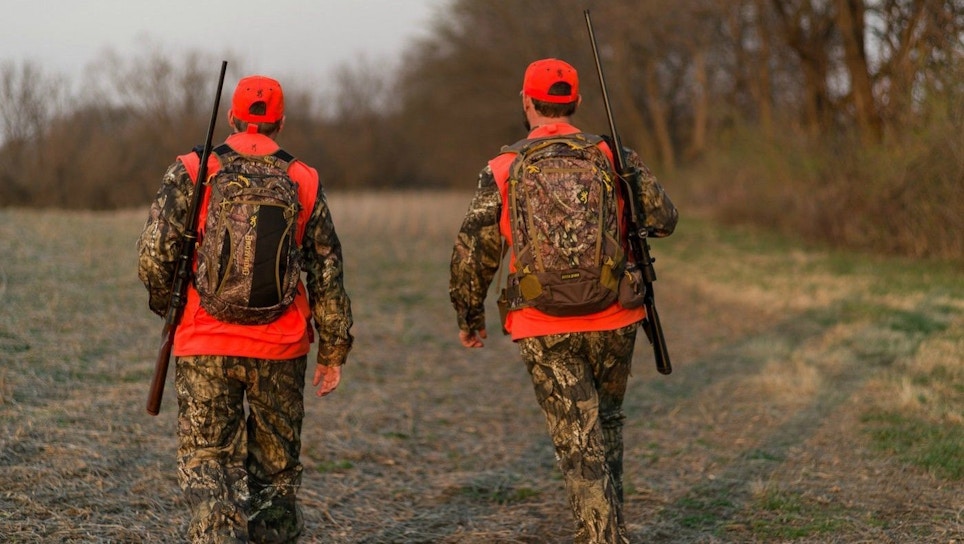Being the grandson of depression-era grandparents, I was brought up to live frugally, and to prepare for the worst. “The time to repair the roof is when the sun is shining.” said President John F. Kennedy in his State of the Union Address on January 11, 1962. I think of both my grandparents’ teachings and President Kennedy’s words when I think of the state of our business going forward in this, the Year of our Lord 2019.
A report released in July 2017 by the U.S. Fish & Wildlife Service (you can access it at www.cahss.org/r3-leaders-release-the-future-of-hunting-and-fishing-project/) gives us grim news. It shows there are just 11.5 million hunters in America, with reliable 2018 estimates dropping that total to closer to 10 million. According to the report, in 1991 there were 40 million hunters and anglers in America. After 26 years, that number dropped to an estimated 29.6 million. Not a big deal, you say — until you remember that during that same period, the U.S. population grew by nearly 30 percent. That means that, in 2016, the percentage of citizens who hunt was just 1.2 percent, and the percentage of citizens who fish was just 8.6 percent. Today there are 400,000 fewer hunters and anglers in America than in 1991, the report continues. In 1991, for example, 1 in 6.3 people was a hunter and/or an angler, while in 2016 that figure drops to just 1 in 8.2 people.
What affects changing participation rates within a given population? One is age. Thanks in no small part to special youth-only hunts (for ages 12-17), less-expensive youth hunting licenses, and other recruitment efforts, participation levels rise during this period. When hunters reach 18 years of age, hunting participation drops until about the age of about 27 years, when many have completed their educations and begun establishing careers. Once people reach the period when they have disposable income and their families are established, participation rates gradually climb — though there are no studies that I know of to show that the special youth hunts they participated in a decade earlier have a positive effect on their becoming adult hunters. Then once people reach their 70s, health issues cause participation rates to fall.
Also, the economy definitely affects participation rates. During the 2008 financial crisis, for example, participation rates dropped, more sharply for fishing than hunting, presumably because hunting is more central to a serious sportsman’s lifestyle than fishing. Also, the study found that people born between 1960 and 1980 are more likely to hunt and fish than those born later. This shows that hunting and fishing participation are not tied to a specific life stage, but rather that there is a 20-year cohort of hunters and anglers moving through different life stages that have experienced high participation rates throughout their lives.
The time to repair the roof is when the sun is shining.”
The ramifications of this changing demographic should be frightening to those who make their living in the business. Not only is your customer base shrinking, but so, too, are the number of people who are contributing to the conservation of wildlife and wild places through the excise taxes they pay on the purchase of firearms, ammunition, fishing tackle, boats, motors, and related items, as well as hunting and fishing licenses, while more and more non-payers are benefiting from it. The research forecasts reductions in conservation revenue as early as 2024, and by 2032, state wildlife agencies and conservation organizations may face big challenges in revenue shortages, loss of political strength, and a great reduction of social significance and relevancy.
This is where R3 — Recruit, Retention and Reactivate — becomes so important. R3 is a national initiative coordinated between USFWS, most state game departments, many conservation organizations, and a number of private industry retailers, wholesalers, and manufacturers, with the stated goal of stopping the bleeding and increasing participation and recruitment of consumptive outdoors sports participants.
Supporting these efforts on the national and state levels is important. On the local level, though, what can you and your business do to help the effort while increasing your own bottom line? If this study data is correct, millennials and Gen Z are not automatically attracted to hunting and shooting. How can we attract them in significant numbers? Do you have programs that specifically target this growing yet often-underserved demographic? What about women and minority groups? How about some of the 50 million inactive gun owners in America? How can we get them to come to a training class or shooting event?
For myself, I’ve come to realize that many millennials view hunting much differently than the trophy hunting emphasis we see on outdoor television and in sporting publications. They’re more interested in the experience, the ethics, learning about nature, and putting the best protein on the planet on their family’s dinner tables. How do we help them achieve their vision?
How do you try to bring new chicks into the hunting and shooting coop in your own business? How do you turn these efforts into potential profit centers? Drop me a note at editor@grandviewoutdoors.com. I’d love to hear about it and share it with our readers.






